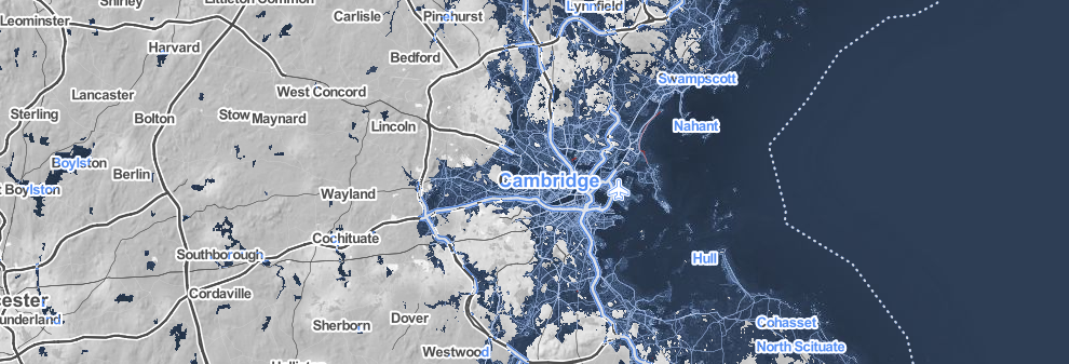The damaging climate consequences of carbon emissions will grow and persist for millennia without a dramatic new global energy strategy, according to a new set of research-based climate change scenarios developed by an international team of scientists.
Rising global temperatures, ice field and glacial melting and rising sea levels are among the climatic changes that could ultimately lead to the submergence of coastal areas that are home to 1.3 billion people today, according to the report, published online by the journal Nature Climate Change.
[Read coverage of the report by CBS News here.]
The findings, the authors write, hold implications for policy makers because the projections reveal the intractability of a climate change across millennia. This long view, they note, should add urgency to efforts to significantly curb carbon emissions within the next few decades, not gradually across the remainder of the 21st century.
“This long-term view shows that the next few decades offer a brief window of opportunity to minimize large-scale and potentially catastrophic climate change that will extend longer than the entire history of human civilization thus far,” the team concluded in its report “Consequences of 21st Century Policy for Multi-Millennial Climate and Sea-Level Change.”
The new projections are based on leading research into contemporary and historical climate data, but also new scientific reconstructions of the only comparable period in human history: the last Ice Age.
“What our analysis shows is that this era of global warming will be as big as the end of the Ice Age. And what we are seeing is a massive departure from the environmental stability civilization has enjoyed during the last 10,000 years of its development."
— BC paleo-climatologist Jeremy Shakun.

“This is the most comprehensive look at global climate in the past, present and future,” said Boston College paleo-climatologist Jeremy Shakun, a co-author of the report. “What our analysis shows is that this era of global warming will be as big as the end of the Ice Age. And what we are seeing is a massive departure from the environmental stability civilization has enjoyed during the last 10,000 years of its development."
The international team of co-authors, led by Peter Clark of Oregon State University, generated new scenarios for temperature rise, glacial melting, sea-level rise and coastal flooding based on state-of-the-art climate and ice sheet models. Under the most conservative scenario, the researchers used a projected global output of 1,280 billion tons of carbon across the next few centuries, far below estimated reserves of at least 9,500 billion tons.
The projected consequences at this level of carbon emissions include:
- Global average temperature increase will exceed the recognized “guardrail” limit of 2 degrees Celsius.
- Melting of glaciers and the massive ice sheets of Greenland and Antarctica will combine for a rise in sea levels of 25 meters, or about 80 feet.
- Coastal submersion could displace as many as 1.3 billion people worldwide, a number that now accounts for approximately 19 percent of the world’s population.
- As many as 25 “megacities” around the world could see rising oceans force at least 50 percent of their populations from their homes and businesses.
The consequences of the three other scenarios, which range as high as total carbon emissions of 5,120 billion tons, are substantially greater and should be considered “increasingly likely” given contemporary growth in carbon emissions, according to the report.

The perspective on the future-looking projections comes from looking back at the last Ice Age, which ended approximately 10,000 years ago.
Shakun and other climate scientists have developed a clearer portrait of that era of glacial melting and how the climate responded to and recovered from an era of significant climage changes.
The team notes scientists have reconstructed a record of natural carbon emission, temperature rise, glacial melting and sea-level rise stretching back 20,000 years to the peak of the Ice Age. That paleo-climatological portrait shows, for example, that the sea-level rise of 130 meters required roughly 10,000 years to retreat as a stabilized climate emerged in which human civilization has flourished.
“This gives us the opportunity to provide the long view on global temperature and sea level rise, from the end of the Ice Age to today and then onward another 10,000 years into the future,” said Shakun. “This sort of side-by-side comparison of the long past and the long future has not been shown before, but is useful for seeing the geological scale to the consequences of carbon emissions since the dawn of industrialization until our actions today.”
To view the full Nature Climate Change report "Consequences of 21st Century Policy for Multi-Millennial Climate and Sea-Level Change," visit: http://dx.doi.org/10.1038/nclimate2923
Ed Hayward | News & Public Affairs



